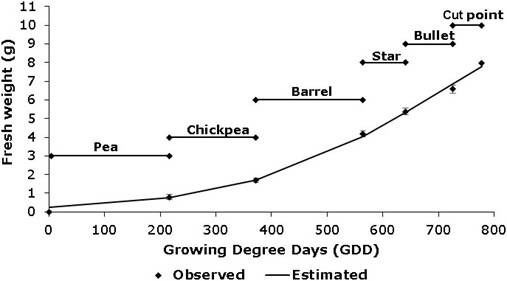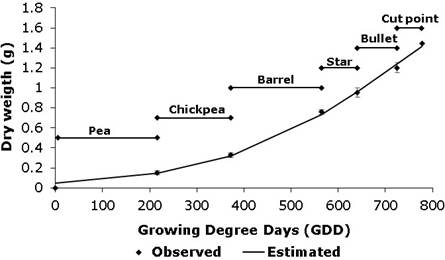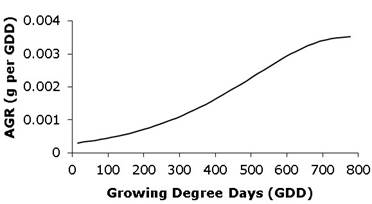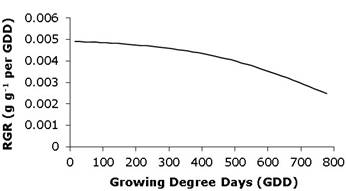INTRODUCTION
During its 50 years of development, the floriculture sector has achieved global recognition for Colombian flowers because of their high-quality standards. For several years, Kenya and Colombia have been the largest producers of cut flowers. The location of Colombia in the equatorial zone and the absence of marked climatic seasons provide suitable conditions to produce cut flowers throughout the year profitably (Quintero et al., 2012).
The carnation (Dianthus caryophyllus L.) belongs to the Caryophyllaceae family and is possibly native to the Mediterranean region, but the exact distribution is unknown because of extensive cultivation during the last 2,000 years (Lim, 2014). It is one of the main floricultural crops together with the chrysanthemum and the rose. It is grown year-round in temperate regions of the world, with Colombia, China, and Kenya as the primary producers (Onozaki, 2018). Worldwide, carnations account for approximately 6% of flower production (González-Amaya et al., 2018). Of the 7,665 hectares of floricultural crops planted with flowers for export in Colombia, carnations account for 12%; more than 910 hectares, about 97% of them are in the Cundinamarca region. In 2019, Colombia exported 43,500 tons of this flower (Portafolio, 2020). In Colombia, the D. caryophyllus species stands out because of its beauty, duration, availability during the year, and resistance to packaging and transportation (Castilla et al., 2014).
In agriculture, the combination of time and temperature results in the so-called thermal time (TT), also known as heating degree days, growing degree days, or physiological time (López et al., 2010). The TT concept is widely applied in agriculture and is defined as the number of growing degree days (GDD) required to complete a certain development process or phenological phase (Trudgill et al., 2005; Parra-Coronado et al., 2015). In various crops, it is used to calculate the rate of appearance of nodes, leaves, flowers, or inflorescences and fruit development (Normand and Léchaudel, 2006; López et al., 2010; Parra-Coronado et al., 2016).
Plant growth depends on the environmental temperature, which called of thermal time. Growing Degree Days (GDD) is one of the most commonly used indices to estimate the growth and development of plants. The accumulation of GDD for each phenological stage is relatively constant and independent on the sowing date; however, however, there are differences between hybrids, varieties, or cultivars of the same plant species (Hoyos et al., 2012).
Each plant has a specific temperature requirement before certain phenological stages are reached (Sikder, 2009). The accumulated temperature is now recognized as the main factor influencing the variation of phenology; increasing or decreasing temperatures generally accelerate or delay development (Asseng et al., 2011). GDD are generally used to include the effects of temperature and describe the timing of biological processes such as mass gain or the appearance of an organ (Colauto et al., 2006). Research has shown that the accumulation of GDD for the achievement of phenological stages differs from cultivar to cultivar (Trudgill et al., 2005; Parra-Coronado et al., 2015).
According to Arévalo et al. (2007), seven phenological stages are observed in the development of the standard carnation plants. these stages depend on the variety and climatic conditions, especially temperature. López et al. (2010) indicated that phenological models can be tools for predicting plant development and estimating crop harvest time. If temperature is recorded in terms of thermal time and its accumulation of mass relationship is known, harvest times can be estimated for different average daily temperature (López et al., 2010).
Given the economic importance of the carnation, it is necessary to delve into issues such as growth dynamics and flower development since they are very important tools for better planning the harvest season. For this reason, the objective of this research was to determine the growth dynamics and development of carnation flower (Dianthus caryophyllus L.) cultivar 'Moon Light' grown in a greenhouse in Bogotá savanna in terms of thermal time.
MATERIALS AND METHODS
This research was carried out in a greenhouse with an average temperature of 24°C and a relative humidity of 70% obtained through a datalogger, with a commercial carnation crop (Dianthus caryophyllus L.), cultivar 'Moon Light', established by Flores Ubaté Ltda. in the municipality of Ubaté (Cundinamarca, Colombia). The company is located specifically in Tausavita village, at 2,560 meters above sea level, with an average rainfall of 740 mm, the ambient temperature presented ranges between 12 and 14ºC, and geographical coordinates 5º18'24” N, 73º48'52” W.
The research began with the selection and marking of 140 stems, considering that some stems will be lost due to handling or phytosanitary problems. The stems were in the 'Rice' stage, which is the initial phase of flower bud formation according to the development stage scale for the standard carnation proposed by Arévalo et al. (2007). The stems were selected from the central part of the production bed in order to avoid losses from handling and edge effect. The stems, were marked with colored silicone rubber bands. The samplings were adjusted to the phenological stages for a total of 7 samplings; each sampling unit consisted of 10 stems. The fresh and dry weight of the flowers were quantified at each sampling point.
The accumulation of Growing Degree Days (GDD) was determined by the residual method (Torres, 2006), with equation 1.
Where, Tm is the mean daily air temperature, calculated by taking the daily temperature every 60min with a Humidity and Temperature Datalogger RHT20 (Extech™). The Tbase or critical point of the crop is the temperature at which metabolic processes begin to be affected. The base temperature reported for carnation by López et al. (2010) was used, i.e. 0°C.
The dependent variables were fresh weight, measured in 10 stems at each of the sampling points and determined with a 0.01g precision balance; and dry weight, measured in the same stems as fresh weight and quantified at each sampling point after drying at 75°C until reaching constant weight with a Memmert® UN30plus drying equipment. The Absolute Growth Rate (AGR) and Relative Growth Rate (RGR) were calculated with the data obtained from the dry weight using the equations in Table 1 (Hunt, 2017).
Table 1 Equations used to determine AGR and RGR (Hunt, 2017).
| Index | Description | Equation | Units |
|---|---|---|---|
| AGR | Absolute Growth Rate | (dw/dt) | g d-1 |
| RGR | Relative Growth Rate | (1/w)(dw/dt) | g g-1 d-1 |
w = total dry mass (g); dw/dt = variation of dry weight as a function of thermal time.
A descriptive analysis was carried out, in which the average and standard error were determined at each of the sampling points. The data were used to plot the trend of each variable with respect to thermal time. The best-fit regression model was adjusted for each variable. The growth rates were determined following the methodology proposed by Carranza et al. (2009). The descriptive statistics and figures were created with the use of Excel, and the functional growth analysis was done with SAS v. 9.2e (Cary, N.C).
RESULTS AND DISCUSSION
The statistical analysis of the growth and development of the carnation flower (Dianthus caryophyllus L.) variety ‘Moon light’ presented adjusted means according to the standard error, the growth analysis was performed using a non-linear logistic model for the variables total fresh and total dry weight. The models presented coefficients of determination (R2) greater than 0.9, indicating that they explained the studied biological phenomena, with the dependent variable thermal time quantified through Growing Degree Days (GDD) (Table 2).
Table 2 Equations for the evaluated parameters in the determination of the growth and development of the carnation flower (Dianthus caryophyllus L.) variety ‘Moon light’ under greenhouse conditions.
| Variable | Model | R2 |
|---|---|---|
| Total fresh weight (g) | y =12.5312/1+ е(-0.00577*( GDD -691.9) | 0.99 |
| Total dry weight (g) | y =2.4923/1+ е(-0.00540*( GDD -726.7) | 0.99 |
The carnation flower variety 'Moon light' presented seven stages of development after sprouting (das): rice, pea, chickpea, barrel, star, bullet, and cut point, which had different accumulations of thermal units. The star, bullet, and cut-off stages required less accumulation of Growing Degree Days (GDD), with values of 76.51 GDD, 84.34 GDD and 52.46 GDD, respectively (Figure 1). The pea and chickpea stages had an accumulation of 216.20 GDD and 155.95 GDD, respectively, as reported by Arévalo et al. (2007), who identified these stages in variety ‘Nelson’ after sprouting. However, in this research, an analysis was not carried out based on chronological or thermal time within the process of growth and development of the flower.

Figure 1 Development stages of the principal carmination (Dianthus cariophyllus L.) variety 'Moon Light' under greenhouse conditions.
Fresh weight. The accumulation of fresh weight was adjusted to a sigmoid type growth represented by a logistic model (Table 2). The carnation flower cv. ‘Moon light’ presented a total fresh weight of 7.96 ± 0.21g. The fresh weight gain was adjusted to the growth phases described by Salisbury and Ross (2010), in which, during the pea stage, a logarithmic type of growth was observed, as manifested in little accumulation of mass as the result of cell division. The mass gain was linear from the pea stage to the bullet stage, ending with cutting (Figure 2). The phase with the greatest gain in fresh mass was phase II, which accumulated 89.9% of the total fresh mass. Growth phase III showed a non-asymptotic curve, possibly because of the continuous accumulation of photo assimilates and water in the last stage of flower growth.

Figure 2 Growth curve in thermal time based on the fresh weight of the carmination (Dianthus caryophyllus L.) variety ‘Moon Light’ under greenhouse conditions. Vertical bars at each sampling point indicate the standard error (n = 10).
Although the accumulation of fresh mass is directly affected by agroecological and crop management conditions (Casierra-Posada et al., 2004), the potential growth of an organ is genetically dictated and directly linked to the characteristics of each cultivar.
Dry weight. The cultivar 'Moon light' presented a constant weight gain from 15.3 GDD (stage 0 rice) to 777.6 GDD (Cut-off point), which was adjusted to a sigmoid type growth represented by a logistic model (Table 2). Phase I occurred from unbuttoning to 13 days after unbuttoning (dau). During this period, 216.2 GDC accumulated, with a dry weight of 0.15 ± 0.007g This phase was characterized by a low accumulation of dry weight. The second phase occurred between 13 dau and 48 dau, a period in which 561.48 GDC accumulated, with a dry weight accumulation of 1.29 ± 0.02g. Phase III did not appear because the flower, being an export product, has a cut-off point when the flower has not yet reached its maturation or senescence phase (Figure 3).

Figure 3 Growth curve in thermal time based on the dry weight of the carmination (Dianthus caryophyllus L.) variety ‘Moon Light’ under greenhouse. Vertical bars at each sampling point indicate the standard error (n = 10).
López et al. (2014) indicate that the flower, after the stem, is the largest sink of dry mass. This is an unexpected characteristic since the flower shows growth in a period of time shorter than that of the stem and leaves. According to Rodriguez and Florez (2006), growth during a time interval can be calculated by simple subtraction; however, dry matter measurements defined in time intervals can be used to determine rates that explain growth dynamics in fruits. The main rates are absolute growth rate (AGR) and relative growth rate (RGR). AGR indicates the change in size per unit of time, while RGR expresses the rate of change in size per unit of initial size (Hunt, 2017).
Absolute growth rate and relative growth rate. Absolute growth rate (AGR) represents the increase in size per unit of time (Opara, 2010). The AGR of the carnation flower variety 'Moon light' increased slowly during phase I of growth, then increased rapidly and constantly until reaching the cut-off point, with a maximum gain of 0.035 g per GDD and an accumulation of 777.68 GDD (Figure 4). Similar results have been reported for standard carnation cv. Nelson (Baracaldo et al., 2010). AGR is a reliable parameter in terms of the instantaneous accumulation of dry matter, as well as the dumping power of the organs (Hunt, 2017). This becomes a very important parameter when planning agricultural tasks in crops because, when AGR is high, sink organs are more sensitive to influences by activities such as foliar fertilization, water supply, and light energy supply (Casierra and Cardozo, 2009).

Figure 4 Absolute Growth Rate (AGR) based on the dry weight of the carmination (Dianthus caryophyllus L.) variety ‘Moon Light’ under greenhouse conditions.
The relative growth rate (RGR) had a continuous decrease, but during the bullet stage, it had a marked decrease. The beginning RGR was 0.0049g g-1 per GDD, and, at the cut-off point, the RGR was 0.0024g g-1 per GDD (Figure 5). The relative growth rate expresses the increase in dry weight of a plant or its organs in time intervals. Also, based on the initial value of the dry weight produced and accumulated, the RGR tended to decrease during the growth and fruit development (Carranza et al., 2009). This phenomenon was observed in the carnation since the flower, as an organ of interest, displayed such behavior.

Figure 5 Relative Growth Rate (RGR) based on the dry weight of the carmination (Dianthus caryophyllus L.) variety ‘Moon Light’ under greenhouse conditions.
Therefore, it was evident that the harvesting process of carnation flower correctly adjusted to the phenological phase cut-off point since it coincided with the maximum accumulation of dry mass by this organ.
CONCLUSION
The growth and development of the carnation flowers lasted 48 days from the pea stage to cutting, during which 777.68 GDD accumulated. There were differences in accumulation between the stages; the star and bullet stages had the lowest accumulation of GDD when compared to the other phenological stages.
The relationship between the growth of the carnation and the Growing Degree Days required in each phenological stage is an important indicator for establishing the appropriate planting dates and the appropriate date for harvesting.















